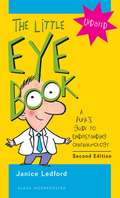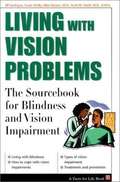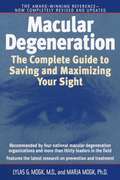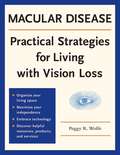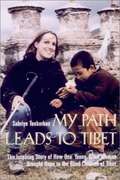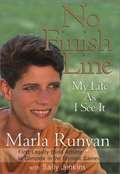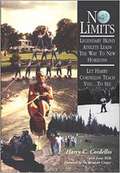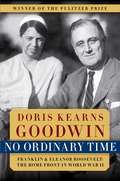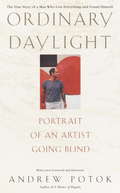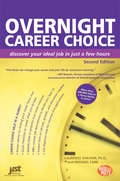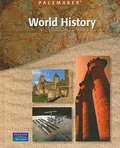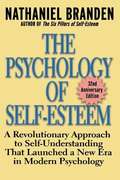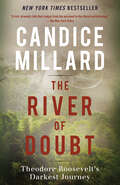Special Collections
Hadley School for the Blind Collection
Description: Recommended Reads for students at Hadley School for the Blind #disability #adults
- Table View
- List View
The Little Eye Book
by Janice K. LedfordThis little book has much information for the non-physician, including what signs to look for, how to determine an emergency and how some medications affect the eye. The superscripted numbers indicate references at the end of the chapters.
Living with Vision Problems
by Jill Sardegna and Susan Shelly and Allan Rutzen and Scott M. SteidlMillions of Americans have a significant level of vision impairment. This revised edition of Living with Vision Problems is designed to provide students with helpful information such as: how to cope, causes and types of vision impairments, preventions, treatments and even LASIK procedures. It is an extensive sourcebook for all topics, including medical, concerning blindness.
Macular Degeneration
by Lylas G. Mogk and Marja MogkDr. Lylas Mogk has a unique personal and professional understanding of AMD. This book explains how to successfully manage and limit its effect on a persons life.
Macular Disease
by Peggy R. WolfeThis invaluable guide to living well with vision loss is the perfect blend of abundant factual material and real-life experience. The book's positive, take-charge approach offers reassurance, hope, and hundreds of proven techniques, strategies, and tips for both the newly diagnosed and those at later stages of their disease. "My Story" vignettes in each chapter describe the author's fears, foibles, and triumphs in challenging situations. Readers will identify with the author's experiences and be encouraged by knowing she successfully traveled the same path.
Making Impressions
by Jenine Mckeown StanleyThis little handbook created by Guide Dog Users Inc. offers information, considerations and suggestions on what you should do when considering partnering with a guide dog. This book gives advice on what considerations you should take into account when choosing a guide dog school, questions and considerations you should ask yourself while in training. The book also gives an outline of what training is like, and things you should bring, as well, as things to help you as a new team after graduation. Advocacy is discussed as well as due process for those situations that can not be resolved. Excellent resource for anyone who is considering taking the plunge and working with a guide dog. And it is also good for those who arleady have a guide dog.
Millicent
by Millicent Collinsworth and Jan WinebrennerLike a modern-day Scarlett O'Hara, Millicent was born into a Southern world of privilege -- a moneyed environment of homesteads, servants, family tradition, and pride. The halcyon days of her childhood left Millicent ill-prepared for the tragedy that would stalk her family and almost destroy it. Like dark cloak, her father's manic depression shrouds her family in shame, forcing them to leave the home they love and journey into a world of poverty, fear, and danger. Millicent becomes a pawn in her family's struggle for survival, nourished only by her dream of restoring her family's honor. But the journey home is a long one. Millicent must overcome sexual and physical abuse, failed relationships, and a perfectionism that leads to bulimia. As if that were not enough, a freak accident leads her to question her sanity and eventually results in her blindness. And so she must learn to live in a world without light... but, in the end, not without live.
More Than Meets the Eye
by Derek Gill and Joan BrockJoan Brock was a teacher at an Iowa school for the blind when her life was nearly prefect. Then tragedy struck not once but twice. Most people would have wallowed in self pity and asked Why me? This courageous woman decided to face her challenges and ask Why not me? Her story is to say the very least inspirational.
My Path Leads to Tibet
by Sabriye TenberkenDefying everyone's advice, armed only with her rudimentary knowledge of Chinese and Tibetan, Sabriye Tenberken set out to do something about the appalling condition of the Tibetan blind, who she learned had been abandoned by society and left to die. Traveling on horseback throughout the country, she sought them out, devised a Braille alphabet in Tibetan, equipped her charges with canes for the first time, and set up a school for the blind. Her efforts were crowned with such success that hundreds of young blind Tibetans, instilled with a newfound pride and an education, have now become self-supporting. A tale that will leave no reader unmoved, it demonstrates anew the power of the positive spirit to overcome the most daunting odds.
No Finish Line
by Sally Jenkins and Marla RunyanMarla Runyan was nine years old when she was diagnosed with Stargardts disease, an irreversible form of macular degeneration. With the uneasy but unwavering support of her parents, she refused to let their diagnosis limit her dreams. Despite her severely impaired, ever-worsening vision, Marla rode horseback and learned to play the violin. And she found her true calling in sports. A gifted and natural athlete, Marla began to compete in the unlikeliest event of all: the heptathlon, the grueling womens equivalent of the decathlon, consisting of seven events: the 200-meter dash, high jump, shot put, 100-meter hurdles, long jump, javelin throw, and 800-meter run. In 1996, she astonished the sports world by qualifying for the U.S. Olympic Trials, in which she broke the American record for the heptathlon 800. It was then that she decided to concentrate on her running. Four years of intense effort paid off: in 2000, she qualified for the U.S. Olympic team by finishing third in the 1500 meters. In Sydney, she placed eighth in the finals and was the top American finisherthe highest womens placing for the United States in the events history. Not long after her return to the States, she shattered the American indoor record for the 5000 meters. With endearing self-deprecation and surprising wit, Marla reveals what its like to see the world through her eyes, how it feels to grow up disabled in a society where expectations are often based on perceived abilities, and what it means to compete at the world-class level despite the fact thatquite literally, for herthere is no finish line.
No Limits
by Harry C. Cordellos and Janet WellsImagine a blind person water-skiing, golfing, running a marathon, and even diving. Harry Cordello did not let his blindness limit his activity. Instead he asked himself "Why not"?
No One is Unemployable
by Debra L. Angel and Elisabeth E. HarneyExplains a 10-step process to overcome either the employer's or employee's barriers such as criminal record, lack of education, immigration, etc.
No Ordinary Time
by Doris Kearns GoodwinDoris Kearns Goodwin&’s Pulitzer Prize–winning classic about the relationship between Franklin D. Roosevelt and Eleanor Roosevelt, and how it shaped the nation while steering it through the Great Depression and the outset of World War II.With an extraordinary collection of details, Goodwin masterfully weaves together a striking number of story lines—Eleanor and Franklin’s marriage and remarkable partnership, Eleanor’s life as First Lady, and FDR’s White House and its impact on America as well as on a world at war. Goodwin effectively melds these details and stories into an unforgettable and intimate portrait of Eleanor and Franklin Roosevelt and of the time during which a new, modern America was born.
On Different Roads
by Geraldine LawhornA true story of an incredible woman who was not about to be held back by the challenges of becoming blind and deaf before she completed high school. Not only does Geraldine Lawhorn live a full life, but she also continues to help others.
Ordinary Daylight
by Andrew PotokAndrew Potok is an intense, vigorous, sensual man--and a gifted painter. Then, passing forty, he rapidly begins to go blind from an inherited eye disease, retinitis pigmentosa. Depressed and angry, he rages at the losses that are eradicating his life as an artist, his sources of pleasure, his competence as a man. He hates himself for becoming blind. But as he will ultimately discover, and as this remarkable memoir recounts, it is not the end of the world. It is the beginning.
his the story of Potok's remarkable odyssey out of despair. He attempts to come to terms with his condition: learning skills for the newly blind, dealing with freakish encounters with the medical establishment, going to London for a promised cure through a bizarre and painful "therapy" of bee stings. He wrestles with the anguish of knowing that his daughter has inherited the same disease that is stealing his own eyesight. And then, as he edges ever closer to complete blindness, there comes the day when he recognizes that the exhilaration he once found in the mix of paint and canvas, hand and eye, he has begun to find in words.
By turns fierce, blunt, sexy, and uproariously funny, Andrew Potok's memoir of his journey is as shatteringly frank as it is triumphant.
Overnight Career Choice
by Michael Farr and Laurence ShatkinThis book provides more than 275 job descriptions with information on each job's pay, growth, openings, education level, and skills needed. Additional information about major industries opens readers' eyes to different sectors where they may be able to build a rewarding career.
Pacemaker General Science (3rd edition)
by Globe FearonThis book teaches about three different areas of science: life science, physical science, and earth science. You will learn about living things, including plants and animals. You will study motion and forces, such as those that affect a thrown baseball and a roller coaster racing along on its track. You will come to better understand the features of the Earth, including its oceans and moon. When you finish this book, you will be prepared to continue studying any field of science you choose. You will be on the road to success in the 21st century.
A Paraprofessional's Handbook for Working with Students Who Are Visually Impaired
by Cyral Miller and Nancy LevackThis book was written to help increase the effectiveness of paraprofessionals and identify ways to help them work with the visually impaired. It stresses team work with other education professionals and gives first hand suggestions to overcome challenges to help the student grow.
A People's History of the Supreme Court
by Peter IronsIrons, a civil liberties lawyer and history professor, brings to life the common people whose real-life circumstances proved precedent setting in Supreme Court decisions. He focuses on the human aspect of decisions, from the impact of the slave trade and related issues in the formation of the nation to the contradictory values of the founding fathers and subsequent lawmakers. Irons reveals that the Bill of Rights was not central to the views of one founder, James Madison; the focus on individual rights was actually a compromise designed to secure ratification of the Constitution. Irons examines how the law has intersected with politics, from the passage of the Thirteenth, Fourteenth, and Fifteenth amendments during the radical reconstruction period through the Jim Crow era, when blacks were stripped of previously adjudicated rights. Irons clearly and repeatedly shows how the law reflects political reality above esoteric legal mandates. Irons continues his analysis to 1992, with case histories exploring the political context of the times. His work gives contextual richness to the history of an important American institution.
The Psychology of Self-Esteem
by Nathaniel BrandenSelf-esteem or self-evaluation determines the way we tackle every aspect of our lives. "Positive self-esteem operates, in effect, as the immune system of consciousness, providing resistance, strength, and a capacity for regeneration." (Nathaniel Branden)
The River of Doubt
by Candice MillardNATIONAL BESTSELLER • At once an incredible adventure narrative and a penetrating biographical portrait—the bestselling author of River of the Gods brings us the true story of Theodore Roosevelt&’s harrowing exploration of one of the most dangerous rivers on earth.&“A rich, dramatic tale that ranges from the personal to the literally earth-shaking.&” —The New York Times The River of Doubt—it is a black, uncharted tributary of the Amazon that snakes through one of the most treacherous jungles in the world. Indians armed with poison-tipped arrows haunt its shadows; piranhas glide through its waters; boulder-strewn rapids turn the river into a roiling cauldron. After his humiliating election defeat in 1912, Roosevelt set his sights on the most punishing physical challenge he could find, the first descent of an unmapped, rapids-choked tributary of the Amazon. Together with his son Kermit and Brazil&’s most famous explorer, Cândido Mariano da Silva Rondon, Roosevelt accomplished a feat so great that many at the time refused to believe it. In the process, he changed the map of the western hemisphere forever. Along the way, Roosevelt and his men faced an unbelievable series of hardships, losing their canoes and supplies to punishing whitewater rapids, and enduring starvation, Indian attack, disease, drowning, and a murder within their own ranks. Three men died, and Roosevelt was brought to the brink of suicide. The River of Doubt brings alive these extraordinary events in a powerful nonfiction narrative thriller that happens to feature one of the most famous Americans who ever lived. From the soaring beauty of the Amazon rain forest to the darkest night of Theodore Roosevelt&’s life, here is Candice Millard&’s dazzling debut.Look for Candice Millard&’s latest book, River of the Gods.
Sand and Thistles
by Jack D. WilkinsonThe author, Dr. Jack D. Wilkinson of Parson, Kansas was blinded while serving in the Army. That did not stop him from becoming a licensed chiropractor. This novel is set in Kansas during the 1930's as four "just a little ornery" boys grow up together. Since there is no TV to occupy their time, they learn how to amuse themselves.
Self Esteem and Adjusting with Blindness, Third Edition
by Dean W. Tuttle and Naomi TuttleA book about the period of personal adjustments that accompany the loss of vision.
